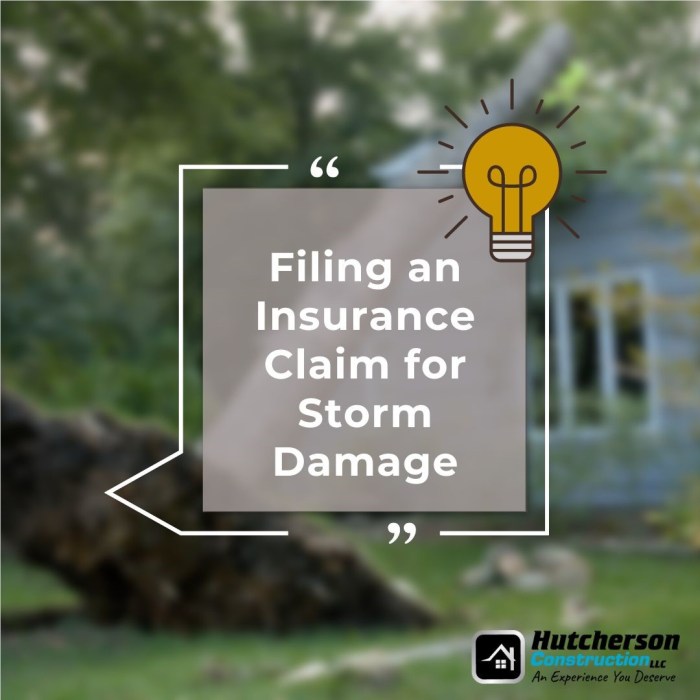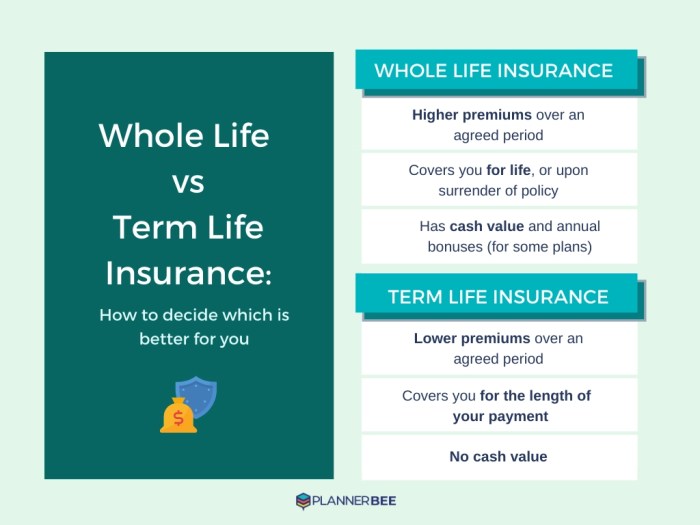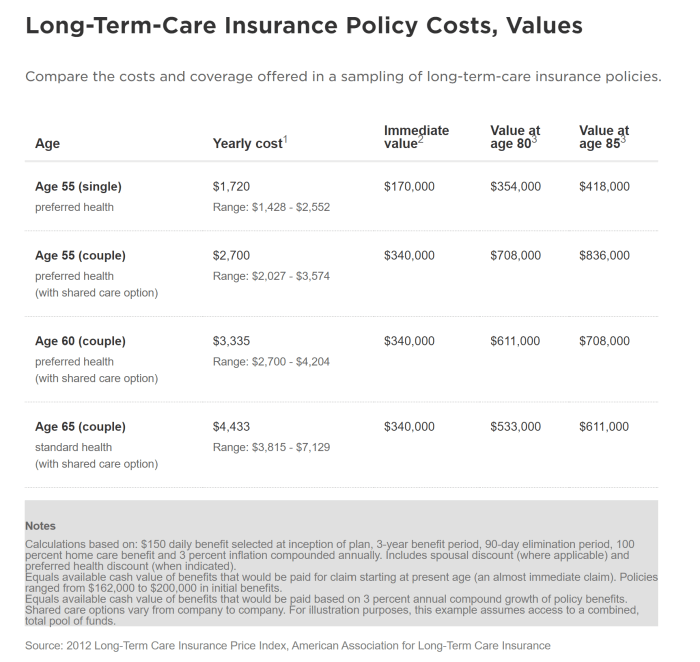Legal Ramifications of Uninsured Driving: Car Accident Without Insurance Lawyer
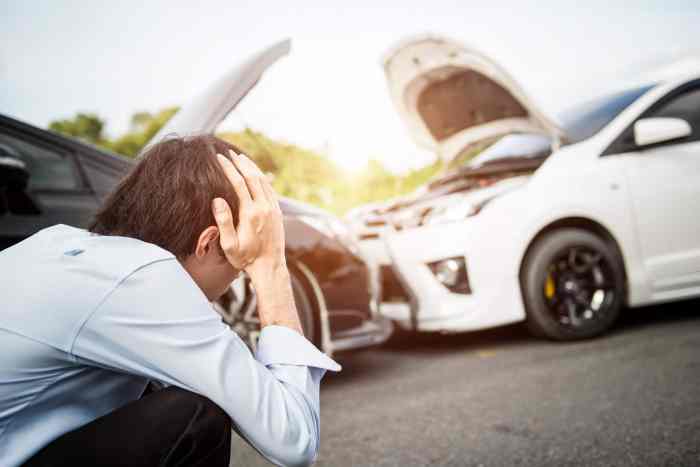
Car accident without insurance lawyer – Yo, let’s be real: driving without insurance is a major fail. It’s not just about being a responsible adult; it’s about facing some serious legal consequences if you get into an accident. This ain’t a game, and the penalties can be way harsher than a detention slip.
Penalties for Uninsured Driving
So, what happens if you’re caught driving without insurance? It varies from state to state, but generally, you’re looking at some hefty fines. We’re talking hundreds, maybe even thousands of dollars, depending on the location and any other infractions. Plus, your license is probably gonna get suspended, meaning no more cruising around. In some places, you might even face jail time, especially if you’re involved in a wreck.
Think of it like this: getting caught without insurance is way more expensive than just paying your premiums.
Legal Processes Following Accidents
If you’re uninsured and cause an accident, things get even more complicated. The other person’s insurance company might sue you to recover their costs. If you don’t have insurance to cover the damages, you could be personally liable for everything – medical bills, car repairs, lost wages, and even pain and suffering. That’s a whole lotta dough you’ll be on the hook for.
Plus, your driving record will be permanently marked, making it harder to get insurance in the future. Think of it as a major black mark on your driving record, making future insurance way more expensive.
Impact of Lack of Insurance on Legal Outcomes
Let’s say you cause an accident while uninsured. The legal outcome will be drastically different than if you had insurance. Imagine you totaled someone’s car, and they had medical bills soaring into the thousands. Without insurance, you could be facing a lawsuit that could bankrupt you. The court might even seize your assets to pay for the damages.
On the other hand, if you had insurance, the claim would go through your insurer, and your personal finances would be largely protected. It’s a huge difference. Another example: If you’re uninsured and involved in a minor fender bender, the other driver might just go after you directly for the cost of repairs.
State-Specific Penalties for Uninsured Driving
It’s crucial to know that the penalties for driving without insurance vary significantly depending on where you are. Here’s a quick rundown of what you might expect in a few states – keep in mind, these are examples, and you should always check your specific state’s laws.
| State | Fine Amount | License Suspension | Other Penalties |
|---|---|---|---|
| California | $100 – $1000+ | Up to 6 months | SR-22 insurance requirement |
| Texas | $175 – $350 | 180 days – 2 years | Vehicle impoundment possible |
| Florida | $150 – $500 | 90 days – 3 years | Points on driving record |
| New York | $500+ | 1 year – 3 years | SR-22 insurance requirement |
Finding and Selecting a Lawyer
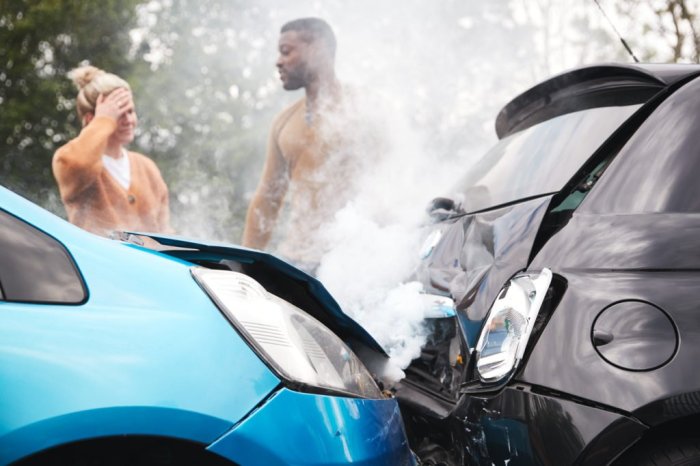
Yo, so you’ve been in a car accident, and you’re totally uninsured? That’s a major bummer, but don’t freak out. Getting the right lawyer is key to navigating this whole mess. This ain’t like choosing a pizza topping; this is about your future.Finding a lawyer who’s got your back and knows the ropes is crucial. You need someone who’s experienced in handling uninsured motorist claims and who’s got a proven track record of success.
Don’t just grab the first name you see in the phone book – do your research.
Facing a car accident without insurance can feel like navigating a stormy sea without a compass, brother. The legal complexities can be daunting, leaving you vulnerable. However, remember that proactive steps can ease the burden; consider securing comprehensive coverage by visiting shop car and homeowners insurance to explore your options. This foresight can provide a safety net, should you ever find yourself in a similar situation in the future, offering peace of mind in the face of adversity.
Identifying Reputable Lawyers
Okay, so how do you find these legal ninjas? Start by asking around. Talk to friends, family, or even your mechanic – someone who might know someone who’s been through a similar situation. Online reviews on sites like Avvo, Yelp, and Google My Business can also give you a feel for a lawyer’s reputation. Check out state bar associations too; they often have lawyer directories and disciplinary information.
Look for lawyers specializing in personal injury, specifically those with experience in uninsured/underinsured motorist claims. This focus shows they’re up to speed on the specific legal issues you’re facing.
Lawyer Selection Criteria: Experience and Success Rate
Choosing the right lawyer isn’t about picking the flashiest ad; it’s about finding someone with serious experience and a proven ability to win cases. Look for lawyers who’ve handled many cases similar to yours. A high success rate is a good sign, but don’t just focus on numbers. Dig deeper. Look at the types of cases they’ve won and the settlements they’ve achieved.
A lawyer who consistently gets good results for clients in uninsured motorist claims is gold. For example, a lawyer boasting a 90% success rate in cases involving similar injuries and policy limitations is a strong candidate compared to one with a lower success rate and less specific experience.
Lawyer-Client Communication and Trust
This is huge, people. You need to be able to communicate openly and honestly with your lawyer. You need to feel comfortable asking questions, and you need to trust that they’re working hard for you. A good lawyer will explain things clearly, keep you updated on the progress of your case, and answer your calls and emails promptly.
Think of it like a team – you’re both working towards the same goal. If you feel like your lawyer is ignoring you or not being upfront, it’s time to look elsewhere.
Questions to Ask Potential Lawyers
Before you commit to a lawyer, you should have a consultation. This is your chance to ask some key questions and get a feel for their style and approach. Here’s a list to get you started:
- What’s your experience handling uninsured/underinsured motorist claims?
- What’s your success rate in these types of cases?
- How will you communicate with me throughout the process?
- What are your fees and how are they structured?
- What’s your strategy for handling my specific case?
- Can you provide references from past clients?
Red Flags When Choosing a Lawyer
Trust your gut. If something feels off, it probably is. Here are some major red flags to watch out for:
- Guaranteeing a win: No lawyer can guarantee a win. It’s a legal battle, not a sure thing.
- High-pressure tactics: A reputable lawyer won’t pressure you into making a quick decision.
- Unclear fees: Make sure you understand exactly how much the lawyer will charge you.
- Poor communication: If they’re unresponsive or difficult to reach, that’s a bad sign.
- Negative online reviews: Pay attention to recurring complaints from past clients.
The Claims Process After an Accident Without Insurance
So, you’ve been in a wreck, and the other driver? Total bummer – no insurance. Don’t freak; this isn’t the end of the world, but it definitely makes things tougher. Navigating the claims process without insurance coverage on the other side requires a strategic approach and a whole lot of patience. Let’s break it down.
Steps in Filing a Claim Against an Uninsured Driver
After a car accident involving an uninsured driver, your first move is to document everything. This means taking photos of the damage to your car, the accident scene, and any visible injuries. Get the other driver’s information (even if they’re uninsured, you still need their details), and the contact info of any witnesses. Then, report the accident to the police – a police report is crucial evidence.
Next, file a claim withyour* insurance company, even if it’s just for your own damages. Many policies include uninsured/underinsured motorist (UM/UIM) coverage, which can help cover your medical bills and vehicle repairs. If your UM/UIM coverage isn’t enough to cover all your losses, you might need to pursue a claim directly against the uninsured driver. This typically involves filing a lawsuit.
Challenges in Pursuing a Claim Against an Uninsured Driver
The main challenge is obvious: the uninsured driver likely doesn’t have the funds to cover your losses. This means you’ll be relying on your own insurance, or possibly going after their assets (like a house or bank account) through a lawsuit. It can also be tough to locate the uninsured driver, especially if they leave the scene. Plus, proving liability can be harder when the at-fault driver isn’t cooperating.
Finally, legal proceedings can take time and money, which is a big stressor on top of everything else.
The Role of an Attorney in Navigating the Claims Process
A lawyer is your ultimate wingman in this situation. They can handle all the legal paperwork, negotiate with insurance companies (yours and the uninsured driver’s, if they have any other related policies), and represent you in court if necessary. They’ll also help you gather evidence and build a strong case to maximize your chances of recovering compensation. Think of them as your expert translator in the often-confusing world of insurance claims and legal jargon.
Evidence to Strengthen a Claim Against an Uninsured Driver, Car accident without insurance lawyer
The stronger your evidence, the better your chances of success. This includes the police report, photos and videos of the accident scene and damages, medical records documenting your injuries and treatment, repair bills, lost wage statements, and witness testimonies. A strong case also includes accurate and detailed accounts of the accident itself. For example, if a witness saw the other driver run a red light, their statement is powerful evidence.
Effectively Communicating with Insurance Companies and Legal Representatives
Keep communication professional and respectful, but firm. Document every interaction – emails, phone calls, letters – and keep copies for your records. Be clear and concise in your communication, providing all the necessary information promptly. Don’t hesitate to ask questions if something is unclear. With insurance companies, always refer to your policy and the specifics of your coverage.
With your attorney, be open and honest about everything related to the accident and your losses. Maintaining open communication is key to a successful outcome.
Understanding Different Types of Compensation
So, you got hit by an uninsured driver? Total bummer, right? But before you start stressing about the bills, know that you might be able to get some serious cash to cover your losses. Let’s break down how you can get compensated for your injuries and damages.
After a car accident caused by an uninsured driver, several types of compensation are available to help you recover from your losses. These aren’t just about fixing your car; they’re about getting your life back on track after a seriously disruptive event. Understanding these types of compensation is key to building a strong case and getting the money you deserve.
Types of Compensation Available
Think of compensation as different categories of losses you can claim. It’s not a one-size-fits-all deal; you can claim multiple types depending on your situation. The big ones are medical bills, lost wages, and pain and suffering.
- Medical Bills: This covers everything from ambulance rides and hospital stays to doctor visits, physical therapy, and prescription drugs. Keep every single receipt!
- Lost Wages: If the accident kept you from work, you can claim the money you lost due to missed shifts, reduced hours, or even the inability to work altogether. This often requires documentation from your employer.
- Pain and Suffering: This is the trickiest one. It compensates for the physical and emotional distress you’ve endured due to the accident. Think chronic pain, emotional trauma, and the overall impact on your quality of life. This is often harder to quantify than medical bills or lost wages.
Calculating Damages in Uninsured Motorist Claims
Figuring out how much money you should get is a process. It’s not just adding up your bills; there are different approaches lawyers use to calculate the overall damages.
- Special Damages: These are your easily quantifiable losses, like medical bills and lost wages. Think of it as concrete evidence of your financial losses.
- General Damages: These are harder to pin down, like pain and suffering. Lawyers often use various methods to estimate this, considering factors like the severity of the injuries, the length of recovery, and the impact on your daily life. One common approach involves comparing your case to similar ones where damages were awarded.
Factors Influencing Compensation Amounts
Several things affect how much compensation you might receive. It’s not just about the severity of your injuries; it’s a complex picture.
- Severity of Injuries: More serious injuries generally mean higher compensation.
- Extent of Medical Treatment: The longer and more extensive your treatment, the higher the claim.
- Lost Wages and Future Earning Capacity: If the accident impacts your ability to earn money in the future, this significantly impacts the compensation amount.
- Pain and Suffering: The level of pain, suffering, and emotional distress is a major factor.
- Liability: Even with an uninsured driver, establishing clear liability is crucial for maximizing your compensation.
Examples of Significant Compensation Awards
While specific amounts aren’t publicly available for every case due to privacy, you can find reported cases showcasing substantial awards for uninsured motorist accidents. These cases usually involve serious injuries like spinal cord damage, traumatic brain injury, or significant long-term disability. These awards often reach hundreds of thousands, or even millions, of dollars.
Obtaining Compensation: A Flowchart
Navigating the compensation process can feel overwhelming, but visualizing it as a step-by-step process can help.
- Accident Occurs: You’re involved in a car accident with an uninsured driver.
- Report the Accident: Report the accident to the police and your insurance company (even if you don’t have uninsured motorist coverage).
- Seek Legal Counsel: Consult with a personal injury lawyer specializing in uninsured motorist claims.
- Investigation and Documentation: Your lawyer will investigate the accident, gather evidence, and document your medical bills, lost wages, and other damages.
- Negotiation and Settlement: Your lawyer will negotiate with the at-fault driver’s insurance company (if applicable) or your own uninsured motorist coverage, aiming for a fair settlement.
- Litigation (If Necessary): If a settlement can’t be reached, your lawyer may file a lawsuit to pursue compensation in court.
- Compensation Awarded: Once the case is resolved, you receive your compensation.
Seek immediate medical attention. Document everything: photos, police report, witness statements.
This establishes a record of the event.
A lawyer will guide you through the process, handle negotiations, and represent you in court if necessary.
This is crucial for building a strong case.
Many cases settle outside of court.
This is a last resort, but sometimes necessary to get fair compensation.
This could be through a settlement or a court judgment.
Uninsured Motorist Coverage and its Importance
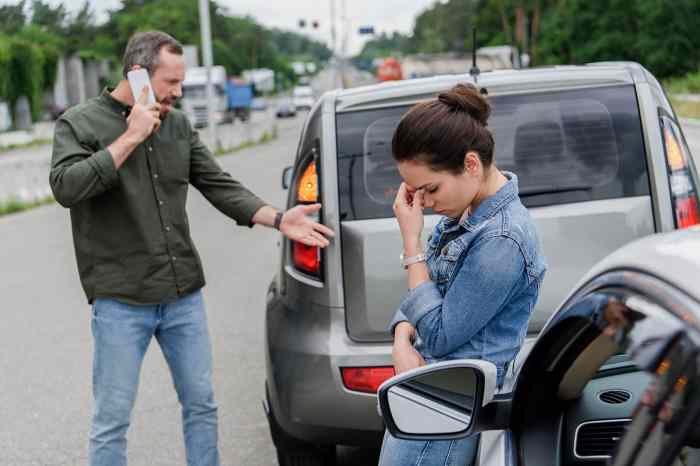
Yo, so you’ve been hit by a driver with no insurance, right? Total bummer. But guess what? There’s a way to protect yourself from this kind of total wreck, and it’s called Uninsured/Underinsured Motorist (UM/UIM) coverage. Think of it as your ultimate safety net in a world full of risky drivers.UM/UIM coverage is like having a personal bodyguard for your car.
It kicks in when you’re involved in an accident with someone who doesn’t have insurance or doesn’t have enough to cover your damages. It essentially acts as a secondary insurance policy, covering your medical bills, car repairs, and other expenses, even if the other driver is at fault and uninsured.
UM/UIM Coverage Protects Drivers
This coverage isn’t just about fixing your car; it’s about protectingyou*. If you’re injured in an accident with an uninsured driver, your medical bills can quickly skyrocket. UM/UIM coverage steps in to help pay for those medical expenses, lost wages, and even pain and suffering. Without it, you might be stuck with massive medical debt, which, let’s be real, is a total nightmare.
It also covers your passengers if they are injured in the accident.
Comparison of UM/UIM Coverage with Other Insurance
UM/UIM coverage is different from your standard liability insurance. Liability insurance covers the
- other person’s* damages if
- you* cause an accident. UM/UIM, on the other hand, protects
- you* if the
- other driver* is at fault and uninsured. Collision coverage will fix your car if you crash, regardless of fault, but it won’t cover your medical bills. Comprehensive coverage handles damage to your car from things like theft or hail, but not accidents with other drivers. UM/UIM fills in the gaps that other policies leave behind.
Examples of Beneficial UM/UIM Coverage
Let’s say you’re stopped at a red light and get rear-ended by someone who admits fault but has no insurance. UM/UIM will cover your medical bills and car repairs. Or imagine you’re in a more serious accident with significant injuries. UM/UIM could cover your long-term medical care, lost wages, and pain and suffering. Without it, you’d be facing those costs alone.
Another example: you’re involved in a hit and run. UM/UIM coverage would still help you cover your expenses.
UM/UIM Coverage Levels and Costs
It’s important to choose a level of UM/UIM coverage that suits your needs and budget. The cost varies by state, insurance company, and your driving record. Generally, higher coverage amounts cost more. It’s worth it to check with your insurance company for the specifics of your plan.
| Coverage Level | Bodily Injury | Property Damage | Approximate Monthly Cost (Example) |
|---|---|---|---|
| Low | $25,000 per person/$50,000 per accident | $10,000 | $5-$10 |
| Medium | $100,000 per person/$300,000 per accident | $25,000 | $10-$20 |
| High | $250,000 per person/$500,000 per accident | $50,000 | $20-$35 |
| Unlimited | Unlimited | Unlimited | Varies greatly |

